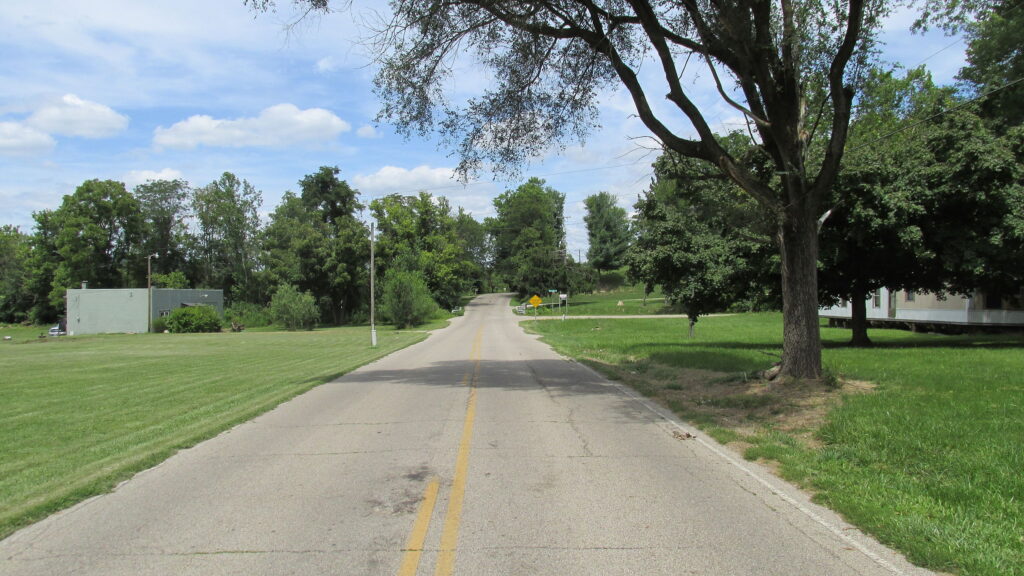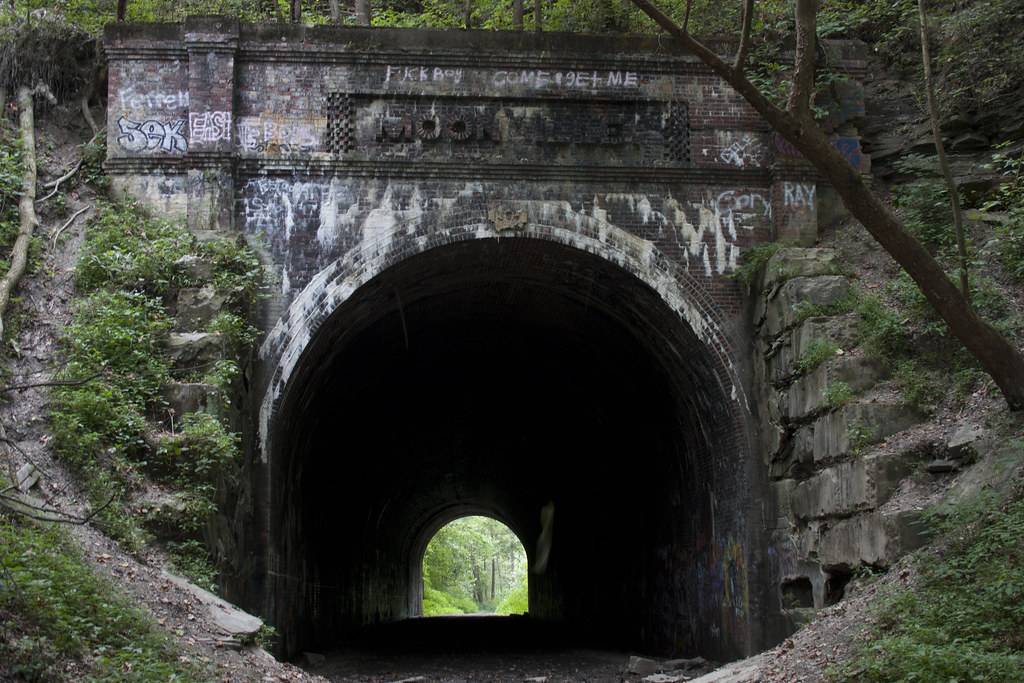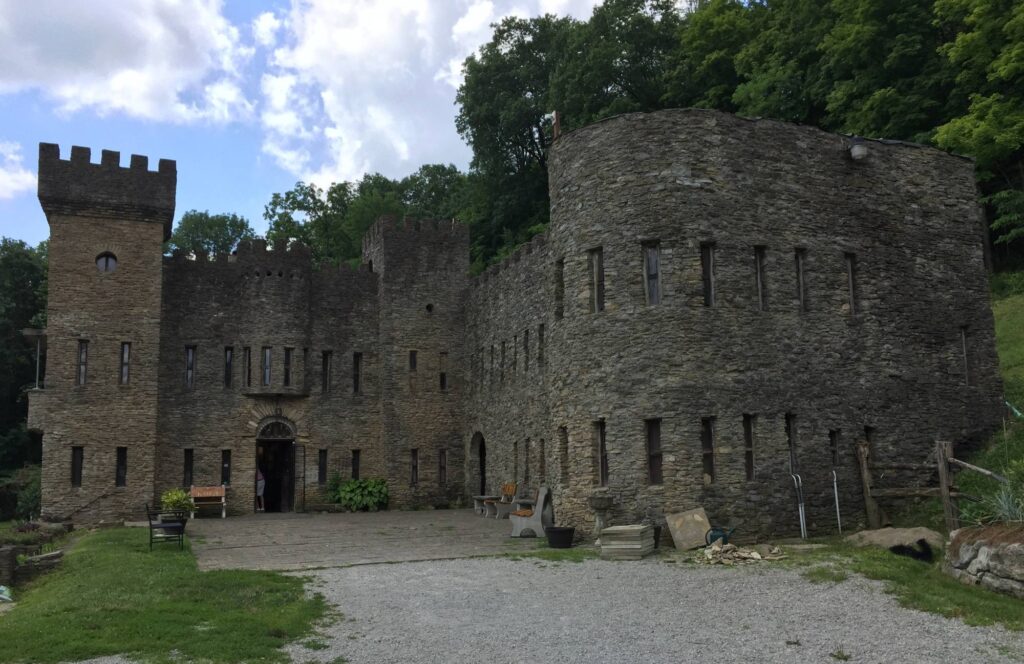If you have ever done any traveling, you’re sure to have run across a place with an unusual name. Some of the more famous examples might include places like Truth or Consequences, New Mexico (guess they really loved that game show) … or Nowhere, Colorado which shouldn’t be confused with Nothing, Arizona. Maryland has a city called Chevy Chase (which was not named after anyone who had ever appeared in the movie Caddyshack, the TV show Community, or the music video for Paul Simon’s You Can Call Me Al.) And I will refrain from mentioning places like New York state’s Bitch Mountain, to keep this post as close to G- Rated as possible.
Throughout the state of Ohio, there are numerous examples of places with names that leave travelers scratching their heads and wondering ‘Why?’ … and in one case, possibly cowering in fear. I present to you the town known as Knockemstiff.
How Knockemstiff Got Its Name
Sadly, nobody really knows exactly why (or how) Knockemstiff got its name. There are, however, a few theories. For example, someone might tell you a story about a young woman who goes into a nearby church to talk with the minister about her violent husband. His advise to her was to “Knock-em-stiff” the next time he acted up. A slightly different version of the story has the minister talking to two women who were both engaged to the same guy, his advise to both of them was to “Knock ‘em stuff” and move on to a better man.
Another theory (which is likely a bit more probable) says that the local taverns that set up before the town was christened were so violent and out-of-control that every day you could see a guy “knock ‘em stiff” during a bar brawl. There is also a rumor that has a local moonshiner calling his brew “Knock ‘em Stiff” because it was among the most potent drinks around.
Wherever the name came from, it stuck.
The History of Knockemstiff
Just like how there is much debate over how the town got its name, there is also some debate as to when, exactly, it became a town (or a community or whatever) in the first place. This was one of the questions raised in a 2008 article from The New York Times that attempted to put it between 1919 and 1940, citing two maps – the earlier that did not feature the town of Knockemstiff and the latter that did.
This, I might note, is not exactly an accurate way of determining when a town (or community) came to be. As evidence, I would like to present an article dated April 2, 1896 from the Chillicothe Gazette that begins, “Once more there is trouble in Knock-Em-Stiff” before reminding readers about two previous “troubles” from the village, including something to do with skunk skins as well as the recent church trial, although it didn’t elaborate on what, exactly, those were all about. The subject of the article was on the partial demolition of a chateau owned by William Lightle.
While his wife was away (the article didn’t say where) William had spent the evening out, presumably at one of the local taverns. When he returned, he found his abode had been viciously vandalized. He investigated the crime himself and came to determine that three people were responsible: William Hall and the Concord Boys, John and James. In their trial, the Reverend John Lightle (think he’s related to William Lightle?) represented the state, and Postmaster George Worthern represented the accused. Throughout the trial, a number of witnesses were called and the determination was made that the amount of damage to Lightle’s property equaled roughly three cents. William Hall and the Concord Boys were not convicted as the only thing proven at the trial was the trio’s fondness for hard cider and chicken.
(Honestly, that’s the story from the article. I couldn’t make that stuff up.)
What this article tells me is that by 1896, Knockemstiff was already established, and had been around long enough to garner some sort of bad-boy reputation. I really do wish the article expanded a bit on the “Skunk Skin” problem as well as the “Church trial” and why it wasn’t a surprise that there was trouble in Knockemstiff. (I did try to search through some further old newspapers but came up empty. That doesn’t mean there is nothing there – just that I couldn’t find it.)
Later that year, another bizarre story was featured in the Chillicothe Gazette. An eighty-year-old man named David Van Denmark was walking to Knockemstiff when he and a local youth nicknamed ‘Konk’ got “tangled up in a wrestling match”. As soon as the fight began, the two found themselves in the roadside ditch when Van Denmark yelled out in pain. Konk had accidentally broken the older man’s right leg. A doctor was called to the scene and Van Denmark was carried to his home, where he would stay in bed for the next couple months while he healed. Van Denmark told the press he wasn’t as young as he used to be and that his leg breaking was an accident.
In May, 1899, William Lightle was back in the news again. While visiting the nearby town of Bournville, Willie wanted a drink but did not have the funds to pay for it. When the barman had left the room, William jumped behind the bar and stole what he thought was a bottle of AppleJack and Cider. The owner heard him and confronted him, and eventually escorted Willie out the door, unaware that he had concealed the bottle under his jacket. He was found a short time later, writhing in agony, as the bottle contained not hard apple cider, but Carbolic Acid, which the barman was likely using as a cleaning agent. William promised to never steal ever again.
Over the next several decades, Knockemstiff, Ohio was the subject (in one way or another) of many newspaper articles. While some were innocent enough (a Sunday potluck picnic at the church, several residents getting married or locals selling parts of their land to someone else) the place did seem to have a reputation where people could get in trouble for “rough housing in the candy store” or getting into a tiff over some (probably illegal) poker games, and the words “drunk and disorderly” appeared quite often.
In 1923, a school was erected in Knockemstiff to help with the overcrowding conditions at the nearby Newingburg School. The School was likely named for the street it was on, Shady Glen Road (which was about a mile long) just like the Church had been named The Shady Glen Church of Christ In Christian Union.
By then, the town had already become somewhat divided (politically, not physically). Some residents seemed to like the name Knockemstiff, while others felt that name was too violent and wanted to refer to the town as Shady Glen.
The War (Of Words) Of Knockemstiff – 1955
The town hit statewide news again in 1955 (maybe it was A Slow News Day) when a small group of residents decided they wanted to try and legally change the name of the town from Knockemstiff to Shady Glen. Their reasons were about what you would expect: they felt the name Knockemstiff didn’t represent the kind of people who were still living in the area and that the name was scaring people away. Shady Glen was a more peaceful, kinder name.
But, for the majority of residents, they said the name had been perfectly good for 150 years, and they saw no reason to change it. Some commented on how the name was unique and memorable. One gentleman featured in a Dayton Newspaper said that when he had joined the Navy, someone asked him where he was from. When he responded to being from a town called Knockemstiff, the officer to which he had been speaking commented that many years ago he had met another man who was also from there. As it turns out, it was this guy’s father.
By the 1950s, the town’s reputation for lawlessness and drunken bar brawls was (almost) behind it, so hanging onto that name out of some sort of lawless backwoods pride seems a bit of a stretch, although that is what some people have tried to claim. I think it was more an issue that most residents didn’t mind the name, and some may have even liked it because it was a bit different. And some, I am sure, just didn’t like change in general.
While a few of the town’s residents attempted to gain support for the name change, many of the other residents began to refer to the place as “The Peaceful Village of Knockemstiff” and repeating stories (some factual, some rather tall) of the quirky and eccentric nature of the town’s history. It soon became quite clear that the name was never going to change.
Knockemstiff – A Brush With Fame
If there was one thing that put Knockemstiff on the National Map, however, it was because of a man named Donald Ray Pollock. He had been born there in 1954 and had lived there most of his life. In 2008, he published a book of short stories, all based on his life growing up. The book was called Knockemstiff. (The book’s original cover featured the city limits sign of Knockemstiff riddled with bullet holes.)
A few years later, he published his first novel, The Devil All The Time, which did not take place in Knockemstiff per se, but was set in “Southern Ohio” and “Parts of West Virginia” … but, there was no mistaking the fact the author had been raised in Knockemstiff. A few local papers did stories of the “local boy done good” variety, featuring Pollock and his local-interest story.
In 2020, the book was made into a film starring Spiderman, Pennywise the Clown, and Harry Potter’s cousin Dudley Dursley (otherwise known as Tom Holland, Bill Skarsgård, and Harry Melling) among others and was released by Netflix. Author Donald Ray Pollock would perform as the narrator.
The release of the film did, once again, put the town of Knockemstiff back onto the map, at least temporarily.
Note: Even though the story takes place “somewhere in Southern Ohio”, it was filled somewhere in Alabama…
Dig Deeper…
- Knockemstiff, Ohio – Wikipedia
- ‘Knockemstiff’ Writer Pulls No Punches – NPR
- Donald Ray Pollock – Goodreads Author Page



